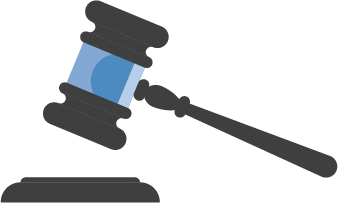Flood Insurance
Protect your home from the unexpected.
Don't leave your home's safety to chance. Get the coverage you need at a competitive rate and enjoy peace of mind knowing you're covered if disaster strikes. $0 fees. No obligation.
Don't leave your home's safety to chance. Get the coverage you need at a competitive rate.


We work with the best to get you the best.
Guided Solutions partners with top-rated insurance providers to offer you a range of coverage options.
Our experienced agents work with you to identify the best plan to ensure that your home is protected, giving you peace of mind.
Safeguard your investment with flood insurance.
Your home is your biggest investment, and it deserves the best protection. Let us help you safeguard your property against the devastating effects of flooding. We'll ensure you have the right level of coverage at the best possible rate. Here's how it works:

Tell us about yourself
Share basic details about yourself and your home.

We shop coverage options
We'll compare quotes from top-rated providers & present you with the best options.

You decide!
You select the option that best fits your needs & we'll help you secure your policy.
Don't settle for subpar coverage.
Let us guide you to the right level of protection at the best available rate.
or call (833) 791-4719 to speak with an advisor
Here’s what you need to know about flood insurance.
Homeowners insurance policies do not cover damage caused by flooding, so a separate flood insurance policy is needed to cover the structure and contents of your home in the event of a flood. With floods being the most common natural disaster in the U.S., it’s important to financially protect yourself in case disaster strikes.

What is flood insurance?
Flood insurance covers damage and losses directly caused by flooding. According to FEMA, a flood is defined as an excess of water on land that is normally dry, affecting two or more acres of land or two or more properties. Learn more.

Is flood insurance required?
Flood insurance is required if your home is in a high-risk flood area and you have a government-backed mortgage.

What does flood insurance cover?
Flood insurance covers the foundation and contents of your home, such as: plumbing and electrical systems, appliances, finishings, and personal belongings. Learn more.
Types of flood insurance.
There are two types of flood insurance policies, dwelling coverage and contents coverage, which are purchased separately and have separate deductibles. As a homeowner, you can purchase coverage up to $250,000 for your dwelling, aka house, and $100,000 for the contents of your home, aka your stuff.
Dwelling Coverage
Protects the home's foundation and covers the cost to repair things like walls, staircases, electrical and plumbing systems, appliances, installed finishings, and more.
Contents Coverage
Contents coverage protects your belongings and covers the cost to replace things like your clothes, furniture, electronics, washer, dryer, artwork, curtains, and more.
Tip: Flood policies typically take 30 days to go into effect.
Though you can purchase flood insurance at any time, there is a wait period before policies go into effect. Don’t wait until last minute to purchase your policy.
Protecting your home from the unexpected.
Our Home Insights blog covers everything you need to know about property insurance, including policy types, coverage options, and cost-saving tips. Protect your biggest investment and enjoy peace of mind knowing your home is covered against unexpected disasters.

Will switching insurance companies change my premiums?
Curious if switching insurance companies will change your premiums? Learn what affects premium costs and how to find the best

What is Loss of Use insurance?
Protect your finances when the unexpected happens. Learn how Loss of Use insurance covers temporary housing, meals, and more during

Can you go home for the holidays during a Medicare-covered nursing home stay?
The holiday season is all about family, joy, and coming together. It’s a time to reconnect with loved ones, enjoy




